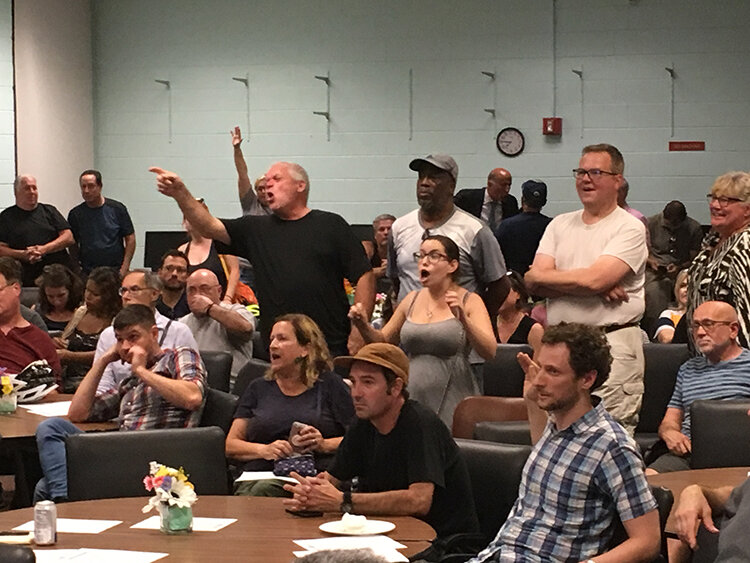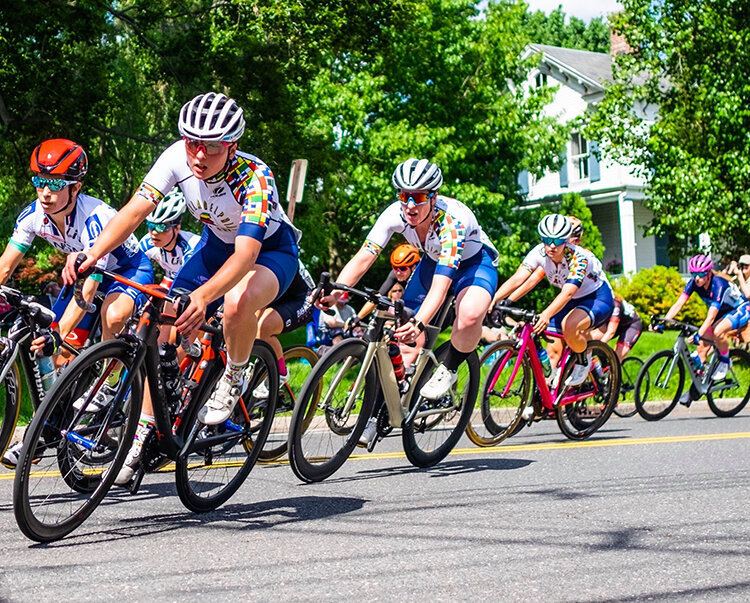Photography by Albert Yee
By Constance Garcia-Barrio
Philadelphia recently lifted the cloak of invisibility from its Black girls, capturing their smarts and spirit, with a new statue in West Passyunk—and it’s high time.
“MVP,” unveiled in July at Smith Playground and Recreation Center is the first statue of an individual Black girl among Philadelphia’s 1,500 public sculptures, but Black girls have been contributing their labor to the city’s growth since the early 1700s.
In the 1800s, young Black women added luster to Philly’s cultural standing through their friendship albums, which contained exquisite calligraphy and paintings, and essays by the likes of Frederick Douglass. Black writers pointed to the albums as indicators of racial progress, according to Nazera Sadiq Wright, Ph.D., associate professor of English at the University of Kentucky and author of Black Girlhood in the Nineteenth Century.
The sculpture’s face has a look of determination, a quality much needed by African-heritage girls nationwide. Several studies, including Girlhood Interrupted: The Erasure of Black Girls’ Childhood, released in 2017 by Georgetown Law School’s Center on Poverty and Inequality, on the adultification of Black girls, show that teachers and school administrators often swallow the stereotype that African American girls need less nurturing and protection than White girls. This misperception leads the school staff to dish out harsher punishments, such as suspension and expulsion, to Black girls than White girls for the same infractions. This may cause the girls to be excluded from academic opportunities and labeled in ways that follow them and stunt their lives.
Food insecurity and domestic duties that sometimes mean caring for younger siblings often increase their stress.
Despite these challenges, Philadelphia has the blessing of some Black girls who’ve found the support to develop their talents and give their best to the city in the future.
Many of them already have ideas about how to solve problems in their community and throughout the city. According to Jordan Dease-Medley, 12, a student at Wissahickon Charter School, a more comprehensive curriculum could help instill pride in African-heritage students.
“I like social science because we get to talk about Africa,” she says. “We have history, too, but it doesn’t cover slavery. History classes need to include it.”
She also has an idea for how to defuse conflicts citywide.
“At school, we use peer mediators to help solve problems,” Dease-Medley says. “Maybe [trained] neighbors could be peer mediators and help with conflicts in the community.”
When it comes to cutting violence, Journey Jones, 17, who attends AIM Academy, an independent co-ed, college prep school in Conshohocken for students with language-based learning differences, stresses the importance of expressing emotions constructively.
“It can be difficult to learn how to show emotions,” says Jones, who has a diagnosis of ADHD and dyslexia. “Therapy can help. Black people have experienced trauma, and we need therapy. I’m privileged to have access to therapy, but it needs to be available to everyone.”
She also believes education can have an impact.
“Schools can play a critical role by presenting the full range of career possibilities—including work in psychotherapy—to students of color,” she says.
Jones, a veteran of Young Playwrights, which puts on public performances of student-written plays, also finds theater essential for self-expression. The arts help heal both artist and audience, she explains, noting she also performs with Danse4Nia Repertory Ensemble, a Philadelphia-based multi-cultural dance company. She plans to do songwriting and theater in the future.
Like Jones, Jaida Copeland, 16, finds dance self-affirming. Copeland attends the Franklin Learning Center and also studies at Danse4Nia, which promotes “positive personal, social, and cultural change.”
“I’m shy, and dance allows me to speak without words,” says Copeland, who envisions creating and leading a business devoted to affordable organic cosmetics.
Taylor Snowden, 17, has already tasted leadership. A few years ago, Snowden and some of her friends started Stay Woke Day at Greene Street Friends School, where they were students.
“We wanted more diversity, so we planned the program and lined up a speaker,” says Snowden, now a student at Philadelphia High School for Girls. Greene Street still holds the event, though the title has morphed into Diversity Day, Snowden says.
At Girls’ High, Snowden lives and breathes math and Spanish, and also runs track. She aims to become a lawyer.
“We must find ways to dismantle the school-to-prison pipeline,” says Snowden, who’s already working toward that goal through a program at the American Friends Service Committee. She also took part in a workshop on criminal justice reform at the University of Pennsylvania this summer.
“We must find alternatives to incarceration for young people of color,” she says.
Sade Black, 18, a student at Murrell Dobbins Vocational High, and Sybria Deveaux, 17, who attends Bartram High, both interns in the Sankofa Community Farm at Bartram’s Garden for several summers, take an earth-centered approach to growing their talents and strengthening the community. Black, in her third year at Sankofa, feels called to leadership.
“I help newcomers learn the basics, like weeding and caring for vegetables,” she says. “I’m giving tours of the site now, too.”
In addition, she shares her knowledge through a cookbook.
“It has recipes based on produce we grow here,” says Black, who writes poetry and short stories as well. “The book includes oils, seasonings, everything.”
Black plans to become a nurse and include nutrition in her practice.
While she nurtures the land, the land nurtures her.
“I know all the trees, and I like to climb them,” Black says. “There’s a special tree I sit under to meditate. People of color need time in green spaces.”
Sybria Deveaux has not only grown food here but a new outlook. “I was stubborn,” she says. “Someone would say, ‘Can I help you with that?’ and I’d say, ‘No thanks. I’m okay.’ Now I see the value of cooperation.”
Deveaux has also picked up skills by helping to manage Sankofa’s farmstand.
“We have a market at 51st and Lindbergh and at Clark Park,” she says. “Last year we sold 15,000 pounds of organic produce, including vegetables used in West African and African American cooking.”
She says the farmstand gives them a chance to talk with people about nutrition and how to grow good food.
“We want to share what we’ve learned with our families and friends and the whole community,” Deveaux says. “We want to have a ripple effect.”







